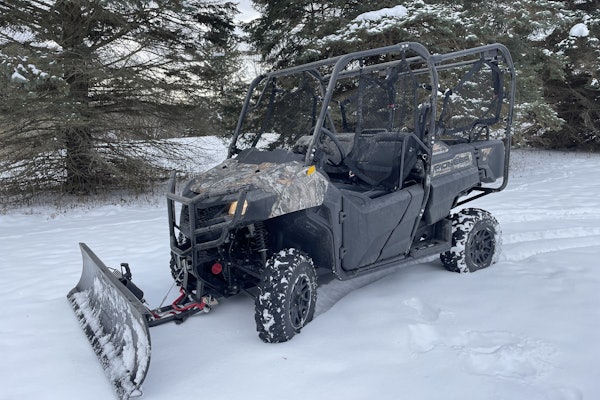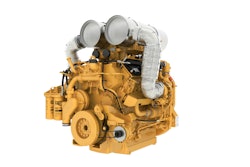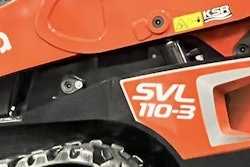
Vermeer and Seattle-based company Interlune revealed a full-size prototype “excavator” to dig up dirt on the moon at 100 metric tons per hour to harvest helium-3.
Interlune has already landed agreements with the federal government and a private company to bring the non-radioactive isotope back to Earth, where it could potentially be used for extremely powerful quantum computing and clean fusion in producing nuclear energy.
“Excavate, Sort, Extract, Separate”
The Interlune Harvester would operate more like a trencher, one of Vermeer’s specialties, than a typical dirt excavator on Earth. According to Interlune, the “excavator” ingests the moon dirt, known as regolith, processes it and returns it to the surface in a continuous nonstop motion. It is designed to consume less power, stir up less dirt and reduce tractive forces compared to traditional trenchers, according to Interlune. It also has to weigh as little as possible because of the high cost of transporting equipment to the moon.
The company says it and Vermeer “built the full-size prototype after successfully developing and testing a sub-scale version in the summer of 2024.”
The next steps in the process involve developing equipment to sort the soils by size to reject the coarser particles; extract a gas mixture from the soil that includes solar wind volatiles such as helium-3; and finally, separate the helium-3 from other molecules in the gas. The separation process must occur at extremely low temperatures.
Bringing Helium-3 Back to Earth
On Earth, helium-3 is collected when tritium, a hydrogen isotope and component of nuclear warheads, decays. A reduction in nuclear weapon stockpiles has led to a shortage of the already scarce gas, which has occasionally been auctioned to private companies by the U.S. Department of Energy.
Interlune has set a goal of becoming “the first company to commercialize natural resources from space,” and the prototype excavator is one part of the plan for reaching that goal. The DOE has agreed to buy 3 liters of moon helium-3 to be delivered by April 2029. That will require processing an amount of lunar dirt equal to filling “a large backyard swimming pool,” Interlune says. It estimates the price of helium-3 at $20 million per kilogram.
Maybell Quantum, a “quantum infrastructure company,” also reached an agreement with Interlune, to buy thousands of liters of helium-3 delivered yearly between 2029 and 2035.
“Helium-3 will fuel a fundamental transformation in computing,” said Corban Tillemann-Dick, founder and CEO of Maybell Quantum. “In the coming years, we’ll go from a few hundred quantum computers worldwide to thousands, then tens of thousands, and they all need to get cold. To get cold, they need dilution refrigeration running on helium-3.”
More Testing Planned
The prototype excavator is the first product resulting from a joint development agreement between Interlune and Vermeer. The companies plan to continue to develop other equipment and technology for use in space and on Earth.
Interlune says it has been testing its sorting and extraction devices in simulated lunar gravity on parabolic flights over the past year. The separation technology is being tested at its cryogenic lab at company headquarters in Seattle.
"The high-rate excavation needed to harvest helium-3 from the moon in large quantities has never been attempted before, let alone with high efficiency," said Gary Lai, Interlune co-founder and CTO. "Vermeer's response to such an ambitious assignment was to move fast. We've been very pleased with the results of the test program to date and look forward to the next phase of development."
Vermeer CEO Jason Andringa, who is the grandson of the equipment manufacturer’s founder Gary Vermeer, will join Interlune’s advisory board. “Combining my personal passion for aeronautics and astronautics with Vermeer equipment that bears my grandfather's name to carefully and responsibly harvest resources to make our world a better place is something I'm incredibly proud of."














